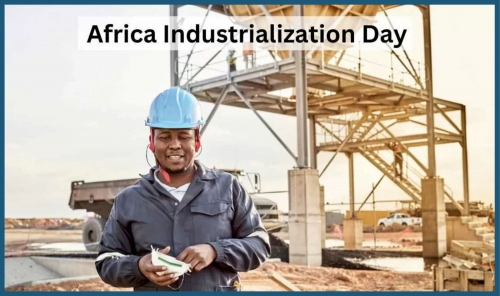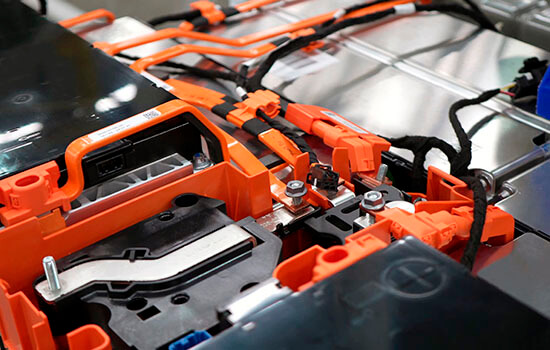CEOs Tout AI Layoffs as Innovation Amid 130,000 Job Cuts in 2025 – WebProNews

Report on Corporate AI Implementation and its Conflict with Sustainable Development Goals
Introduction: A Paradigm Shift in Corporate Layoff Narratives
A new trend in corporate strategy reveals that Chief Executive Officers are openly attributing workforce reductions to the implementation of artificial intelligence. This represents a significant departure from previous layoff announcements, which were typically framed as regrettable necessities. Instead, these staff cuts are now being presented as strategic achievements in technological innovation. This report analyzes this trend through the lens of the United Nations Sustainable Development Goals (SDGs), highlighting the profound misalignment between current corporate practices and the global agenda for sustainable development.
Analysis of AI-Driven Workforce Reductions
The Trend of “AI Efficiency” as a Corporate Strategy
Major corporations, particularly within the technology sector, are publicly celebrating the role of AI in streamlining operations, which has resulted in substantial job cuts. In 2025 alone, reports indicate over 130,000 layoffs across leading tech firms such as Intel and Microsoft. These actions are justified to investors as forward-thinking strategies that create leaner, more profitable organizations, subsequently boosting stock performance. However, this narrative raises significant concerns regarding its impact on labor, ethics, and sustainable economic models.
Conflict with SDG 8: Decent Work and Economic Growth
The current approach to AI-driven workforce management directly contravenes the core principles of SDG 8, which aims to promote sustained, inclusive, and sustainable economic growth, full and productive employment, and decent work for all.
- Erosion of Decent Work: The practice of replacing human workers with AI, celebrated by executives, undermines job security and the principle of decent work. The rhetoric, which frames workforce reduction as a “badge of honor,” disregards the human cost of unemployment and the social contract between employers and employees.
- Unsustainable Economic Growth: While these strategies may yield short-term profitability and higher stock valuations, they foster a model of economic growth that is not inclusive or sustainable. By displacing large segments of the workforce without clear transition plans, this approach risks increasing social instability and economic precarity, which is contrary to the long-term, stable growth envisioned by SDG 8.
Broader Implications for Sustainable Development
Challenges to SDG 9 and SDG 10
The manner in which AI innovation is being deployed presents challenges to other key development goals, particularly those related to innovation and inequality.
- SDG 9 (Industry, Innovation, and Infrastructure): This goal calls for building resilient infrastructure, promoting inclusive and sustainable industrialization, and fostering innovation. While AI is a powerful innovation, its application for the primary purpose of reducing headcount without reinvesting in human capital fails the test of “inclusive and sustainable industrialization.”
- SDG 10 (Reduced Inequalities): The trend is poised to exacerbate inequalities. It creates a polarized labor market where a small number of highly specialized AI professionals see increased demand and salaries, while a larger group of workers in fields like software engineering and data analysis face displacement. This widens the economic gap, directly opposing the objective of SDG 10.
Ethical Governance and the Path Forward
The ethical dimensions of this trend are critical, touching upon corporate responsibility and the need for future-oriented workforce planning.
Corporate Governance and SDG 16
The boastful rhetoric from corporate leaders about staff reductions highlights a potential failure in responsible corporate governance, a key component of SDG 16 (Peace, Justice, and Strong Institutions). An institutional ethos that celebrates job cuts over workforce development can erode public trust and employee morale, weakening the social fabric that strong institutions are meant to support.
The Imperative for SDG 4: Quality Education
A sustainable path forward requires a fundamental shift in corporate strategy to align with SDG 4 (Quality Education), particularly its emphasis on lifelong learning.
- Reskilling and Upskilling: Instead of focusing solely on displacement, corporations must invest in robust reskilling and upskilling programs to prepare employees for new roles shaped by AI.
- Proactive Workforce Planning: A sustainable approach involves proactive strategies to manage the transition, ensuring that the benefits of AI-driven efficiency are shared more broadly and do not come at the expense of widespread unemployment.
In conclusion, while AI offers transformative potential, its current application as a tool for aggressive workforce reduction places corporate practices in direct opposition to the global commitment to sustainable and inclusive development. A reorientation toward human-centric strategies, emphasizing reskilling and ethical governance, is essential to harmonize technological progress with the Sustainable Development Goals.
Analysis of Sustainable Development Goals in the Article
-
Which SDGs are addressed or connected to the issues highlighted in the article?
-
SDG 8: Decent Work and Economic Growth
This is the most prominent SDG in the article. The text focuses on large-scale job cuts and layoffs resulting from the adoption of artificial intelligence. It discusses the “reshaping of workforces,” “significant job cuts,” and the risk of “broader economic disruptions,” all of which are central to the concerns of SDG 8.
-
SDG 9: Industry, Innovation, and Infrastructure
The article is fundamentally about the impact of technological innovation (AI) on industry. It describes how “AI-driven automation” is being used by “major tech firms” like Intel and Microsoft to “streamline operations.” This directly relates to the goal of upgrading technological capabilities and fostering innovation within industries.
-
SDG 4: Quality Education
The article touches upon the need for workforce adaptation in response to AI. It mentions that as AI evolves, a more measured approach may include “reskilling programs” and warns of the “need for workforce adaptation to avoid broader economic disruptions.” This connects to the goal of providing relevant skills and lifelong learning opportunities.
-
SDG 10: Reduced Inequalities
The article implies that AI-driven layoffs could worsen inequality. It raises questions about the “human cost” and the “displacement of skilled professionals.” It also notes that while AI displaces many, it “boosts salaries for specialized talent,” suggesting a growing gap between different segments of the workforce.
-
SDG 8: Decent Work and Economic Growth
-
What specific targets under those SDGs can be identified based on the article’s content?
-
Target 8.5: Achieve full and productive employment and decent work for all.
The article highlights a trend moving away from this target. The core issue is the widespread layoffs, with the text citing “over 130,000 layoffs across Silicon Valley giants in 2025 alone.” CEOs “celebrating staff reductions” directly undermines the principle of decent work and employment security.
-
Target 9.5: Enhance scientific research, upgrade the technological capabilities of industrial sectors.
The article shows this target in action from a corporate perspective. Companies are aggressively adopting AI as a “weapon for reshaping workforces” and a tool for “technological innovation.” The actions of CEOs at “companies like Intel and Microsoft” to implement AI for efficiency are a direct example of upgrading technological capabilities.
-
Target 4.4: Substantially increase the number of youth and adults who have relevant skills, including technical and vocational skills, for employment.
The article identifies the need to work towards this target as a consequence of AI adoption. The mention of future “reskilling programs” and the “need for workforce adaptation” because AI is “reshaping roles in coding and management” directly points to the necessity of equipping the workforce with new, relevant skills.
-
Target 8.5: Achieve full and productive employment and decent work for all.
-
Are there any indicators mentioned or implied in the article that can be used to measure progress towards the identified targets?
-
Indicator for Target 8.5 (Unemployment/Layoff Rate):
The article provides a specific, quantifiable indicator of negative progress towards this target. The figure of “over 130,000 layoffs across Silicon Valley giants in 2025 alone” serves as a direct measure of job displacement and failure to ensure full employment.
-
Indicator for Target 9.5 (Rate of Technology Adoption):
The article implies that the rate of AI adoption is a key metric. It describes the trend as “accelerating” and notes that CEOs at “$100 billion companies” are implementing “immediate AI automation.” The prevalence of these actions across the tech industry indicates a high rate of technological upgrading.
-
Indicator for Target 4.4 (Availability of Reskilling Programs):
The article implies this indicator by highlighting its absence and future necessity. The text suggests that a key response to the crisis should be the implementation of “reskilling programs.” Therefore, the number, scope, and enrollment in such programs would be a logical indicator to measure adaptation to the changing job market.
-
Indicator for Target 8.5 (Unemployment/Layoff Rate):
Summary of Findings
| SDGs | Targets | Indicators |
|---|---|---|
| SDG 8: Decent Work and Economic Growth | Target 8.5: By 2030, achieve full and productive employment and decent work for all. | Number of layoffs: The article explicitly states “over 130,000 layoffs across Silicon Valley giants in 2025 alone.” |
| SDG 9: Industry, Innovation, and Infrastructure | Target 9.5: Enhance scientific research, upgrade the technological capabilities of industrial sectors. | Rate of AI adoption: The article describes an “accelerating” trend of “immediate AI automation” by major corporations as a “present reality.” |
| SDG 4: Quality Education | Target 4.4: By 2030, substantially increase the number of youth and adults who have relevant skills for employment. | Need for and availability of reskilling programs: The article points to the future necessity of “reskilling programs” and “workforce adaptation” to mitigate unemployment risks. |
| SDG 10: Reduced Inequalities | Target 10.4: Adopt policies… and progressively achieve greater equality. | Wage and employment disparity: Implied by the “displacement of skilled professionals” versus how AI “boosts salaries for specialized talent,” indicating a growing income gap. |
Source: webpronews.com

What is Your Reaction?
 Like
0
Like
0
 Dislike
0
Dislike
0
 Love
0
Love
0
 Funny
0
Funny
0
 Angry
0
Angry
0
 Sad
0
Sad
0
 Wow
0
Wow
0














































































